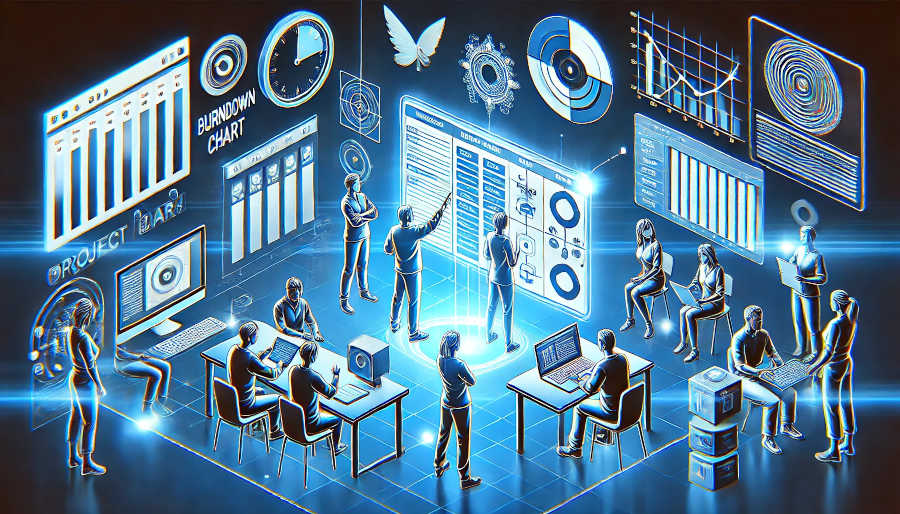Understanding the Purpose of a Retrospective
The retrospective is not merely a meeting to air grievances or celebrate successes; it is a strategic tool for continuous improvement. The primary purpose is to create a safe space where team members can openly discuss their experiences, challenges, and ideas without fear of judgment. This open dialogue helps in identifying patterns, both positive and negative, that influence the team's performance. By understanding these patterns, the team can make informed decisions about what to keep, what to change, and what to experiment with in the next iteration.
A well-conducted retrospective also fosters a culture of accountability and ownership. When team members actively participate in the reflection process, they feel more invested in the outcomes and are more likely to take responsibility for implementing the agreed-upon improvements. This sense of ownership is crucial for sustaining the momentum of Agile practices and ensuring that the team remains aligned with its goals.
Moreover, retrospectives serve as a platform for learning and growth. They provide an opportunity for team members to share knowledge, learn from each other's experiences, and develop new skills. This continuous learning cycle not only enhances individual capabilities but also strengthens the overall team dynamic, making the team more resilient and adaptable to future challenges.
Step 1: Setting the Stage for Open Communication
The first step in conducting an effective retrospective is to create an environment that encourages open and honest communication. This begins with setting the right tone at the start of the meeting. The facilitator should clearly articulate the purpose of the retrospective and emphasize that it is a judgment-free zone where everyone's input is valued. This helps in building trust among team members and ensures that everyone feels comfortable sharing their thoughts.
Next, it is essential to establish ground rules for the discussion. These rules should promote respect, active listening, and constructive feedback. For example, one rule could be that only one person speaks at a time, and everyone else listens without interruption. Another rule could be to focus on behaviors and processes rather than individuals, to avoid personal conflicts. These ground rules help in maintaining a positive and productive atmosphere throughout the meeting.
Finally, the facilitator should use icebreakers or warm-up activities to help team members relax and engage with each other. These activities can be as simple as asking everyone to share one thing they are proud of from the last iteration or one challenge they faced. The goal is to create a sense of camaraderie and set the stage for a collaborative discussion.
Step 2: Gathering Data and Insights
Once the stage is set, the next step is to gather data and insights from the team. This involves collecting information about what happened during the iteration, including successes, challenges, and unexpected events. The facilitator can use various techniques to collect this data, such as brainstorming, surveys, or visual aids like sticky notes or whiteboards. The key is to ensure that everyone has an opportunity to contribute and that the data is comprehensive and representative of the team's experiences.
After collecting the data, the team should analyze it to identify patterns and trends. This analysis helps in understanding the underlying causes of both positive and negative outcomes. For example, if the team consistently identifies communication as a challenge, it may indicate a need for better tools or processes to facilitate information sharing. Similarly, if the team frequently highlights successful collaboration, it may suggest that certain practices or team dynamics are working well and should be continued or expanded.
The insights gained from this analysis are crucial for guiding the next steps in the retrospective. They provide a factual basis for discussing what changes or improvements are needed and help in prioritizing actions that will have the most significant impact on the team's performance.

Step 3: Generating Actionable Improvement Ideas
With the data and insights in hand, the team can now focus on generating actionable improvement ideas. This step involves brainstorming potential solutions to the challenges identified and exploring ways to enhance the positive aspects of the iteration. The facilitator should encourage creative thinking and ensure that all ideas are considered, regardless of how unconventional they may seem.
Once a list of potential improvements has been generated, the team should prioritize them based on their impact and feasibility. This prioritization helps in focusing on the most critical areas that will drive the greatest improvement. The team should also consider the resources and time required to implement each idea and ensure that the selected actions are realistic and achievable within the next iteration.
Finally, the team should assign ownership for each action item. This means identifying who will be responsible for implementing the improvement and setting a timeline for completion. Assigning ownership ensures accountability and helps in tracking progress over time. It also reinforces the sense of ownership and commitment to continuous improvement that is at the heart of Agile practices.
Step 4: Closing the Retrospective with a Clear Plan
The final step in conducting an effective retrospective is to close the meeting with a clear plan for moving forward. This involves summarizing the key takeaways from the discussion, reviewing the action items, and ensuring that everyone is aligned on the next steps. The facilitator should also highlight any immediate actions that can be taken to address urgent issues and set the tone for the next iteration.
It is also important to reflect on the retrospective process itself and gather feedback from the team. This feedback can be used to improve future retrospectives and ensure that they remain a valuable and engaging experience for everyone involved. For example, if the team feels that the meeting was too long or that certain topics were not adequately addressed, the facilitator can adjust the format or agenda accordingly.
Finally, the team should celebrate their achievements and acknowledge the progress they have made. This celebration helps in boosting morale and reinforcing the positive aspects of the iteration. It also serves as a reminder that retrospectives are not just about identifying problems but also about recognizing and building on successes.
FAQ
Q: How often should a team conduct a retrospective?
A: The frequency of retrospectives depends on the length of the iteration or sprint. For most Agile teams, conducting a retrospective at the end of each iteration is recommended. This ensures that the team has regular opportunities to reflect on their work and make continuous improvements.
Q: What if the team is resistant to participating in retrospectives?
A: Resistance to retrospectives often stems from a lack of understanding of their value or a fear of conflict. To address this, the facilitator should clearly communicate the purpose and benefits of retrospectives and create a safe and supportive environment for discussion. It may also help to start with smaller, less formal retrospectives and gradually build up to more structured sessions.
Q: How can we ensure that action items from retrospectives are implemented?
A: To ensure that action items are implemented, it is crucial to assign clear ownership and set specific timelines for each item. Regularly reviewing progress during team meetings or stand-ups can also help in keeping the team accountable. Additionally, celebrating small wins and recognizing the impact of implemented improvements can motivate the team to continue taking action.
ARTICLE TITLE :Agile iterative development: How to conduct an effective 4-step retrospective ,AUTHOR :ITpmlib

















